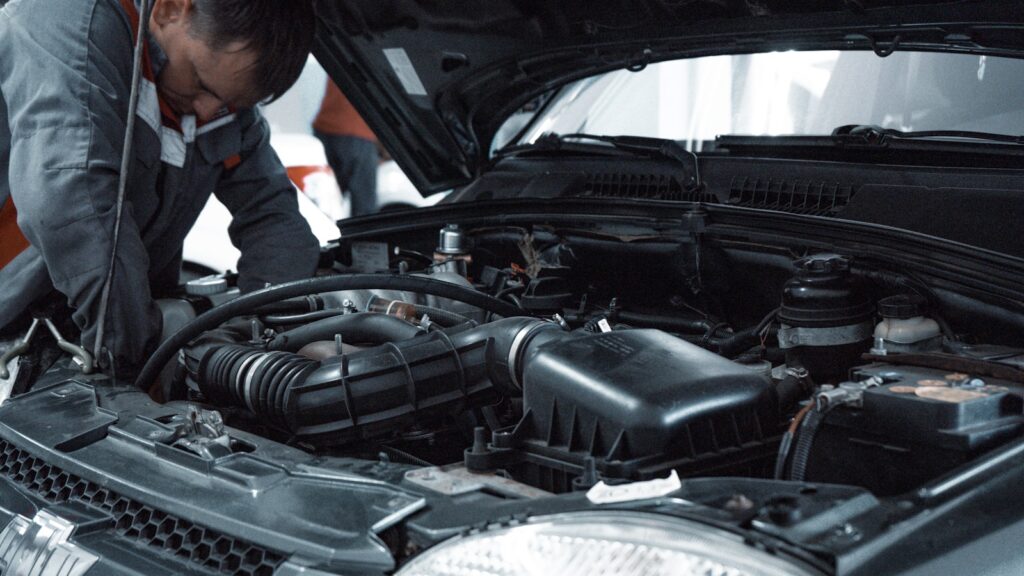
When a safety issue arises with your vehicle, it’s not just an inconvenience; it can be a significant concern for your personal safety and financial investment. Vehicle recalls are an essential aspect of consumer safety and rights, affecting millions of drivers each year. They signal potential safety concerns that manufacturers are legally obligated to address, and understanding your role in this process is crucial for effective resolution and peace of mind on the road.
Indeed, when a vehicle is recalled, it means a safety defect has been identified that poses a risk to you and other road users, or the vehicle fails to meet vital safety standards. The law unequivocally mandates that manufacturers fix these defects at absolutely no cost to you. This fundamental right forms the cornerstone of consumer protection in the automotive industry, empowering you to ensure your vehicle remains safe and compliant without unexpected financial burdens.
This in-depth guide is designed to provide you with clear, step-by-step guidance on how to navigate the complexities of a vehicle recall. We aim to equip you with insights into your rights, the manufacturer’s responsibilities, and the practical steps you need to take from the moment a recall is announced, helping you to rectify the issue quickly and safeguard your safety effectively.

1. **Understanding Vehicle Recalls**Vehicle recalls are systematic processes initiated by manufacturers or regulatory bodies when a safety-related defect or non-compliance with federal safety standards is identified in a vehicle or its parts. These defects are not minor glitches; they represent an unreasonable safety risk that could compromise the well-being of vehicle occupants or others on the road. The very purpose of a recall is to mitigate these risks by ensuring that all vehicles meet established safety standards.
Manufacturers have a clear obligation to correct safety defects without charging vehicle owners. This legal mandate, often enforced by agencies like the National Highway Traffic Safety Administration (NHTSA) in the United States, ensures that the financial burden of rectifying safety issues does not fall on the consumer. The process typically begins with an investigation into reported defects, which may lead to the issuance of a formal recall notice.
Once a recall is announced, manufacturers must notify affected vehicle owners, dealers, and distributors about the defect and the necessary corrective actions. This communication is vital for ensuring all parties are informed promptly and understand the nature of the defect, the risk it poses, and the instructions for its resolution. The NHTSA also plays a critical oversight role, monitoring the entire process to ensure compliance and, if necessary, imposing penalties for failures to meet obligations.
Ultimately, understanding what constitutes a vehicle recall is the first step towards protecting yourself. It signifies a serious issue that demands attention, and knowing that manufacturers are legally bound to provide a remedy at no cost to you is empowering. This clarity fosters a safer environment on the roads, reinforcing the significance of following established vehicle recall procedures for everyone’s benefit.
Read more about: Your Ultimate Guide to Navigating the Used Car Market: Avoid Rip-Offs and Drive Away with Confidence

2. **Identifying a Safety Recall**Knowing how to determine if your vehicle is subject to a recall is a critical step in safeguarding your safety. Safety recalls are issued by either the NHTSA or the automaker themselves when a vehicle or its components fail to meet defined safety standards. This can be due to various reasons, from manufacturing errors to design flaws, all of which present a potential risk on the road.
The most reliable way to check for a recall is by comparing your Vehicle Identification Number (VIN) against official databases. Both the NHTSA website and the automaker’s own site provide online tools where you can input your VIN to see if any open recalls are associated with your specific vehicle. Regularly checking these resources helps vehicle owners stay alert to any recalls affecting their automobiles, even if a direct notification hasn’t been received yet.
Typically, when a recall is issued, you will receive a recall notice directly from the manufacturer. This communication, often delivered through mailed letters, but increasingly via digital notifications like email or text messages, provides crucial details. It outlines the specific defect, explains the potential risks involved, and describes the recall process, including the proposed remedy. It’s imperative to review this notice carefully to understand the exact nature of the problem and the steps you need to take.
Proactive engagement in checking for recalls and thoroughly reviewing any notices received is paramount. This vigilance not only ensures that potential hazards are addressed promptly but also contributes to overall road safety by prompting timely repairs. Remaining informed empowers consumers to make responsible decisions about their vehicle’s safety and compliance.
Read more about: Your Ultimate Guide to Navigating the Used Car Market: Avoid Rip-Offs and Drive Away with Confidence

3. **Recall Initiation Process**The journey of a vehicle recall begins with the identification of a safety defect. This critical first step can originate from two primary sources: either the automaker itself discovers an issue through its internal testing, warranty claims, or consumer reports, or the National Highway Traffic Safety Administration (NHTSA) identifies a problem through its investigations, consumer complaints, or data analysis. Once a potential defect is recognized, a thorough investigation is conducted to ascertain its nature, severity, and the scope of affected vehicles.
Upon confirming a safety defect that warrants a recall, the manufacturer is legally obligated to report it publicly. This report must provide comprehensive details, including a clear description of the defect, an explanation of the background leading to the recall, the specific vehicles or equipment affected, and the planned remedy. This transparency is vital for public awareness and regulatory oversight, ensuring that all necessary information is made available.
Following the public announcement, the manufacturer is required to notify registered vehicle owners directly. This notification, often a mailed letter, serves as a crucial alert, outlining the risks associated with the defect and providing explicit instructions on the repair steps that owners need to follow. A core component of this notification is the assurance that all repairs related to the recall will be performed free of charge, emphasizing the manufacturer’s responsibility to rectify the issue.
Owners are then advised to take their vehicle to an authorized dealer for service, where the necessary corrective actions will be performed. This systematic process, from defect identification to owner notification and free repair, underscores the structured legal framework designed to protect consumer safety and maintain accountability within the automotive industry. Timely notification is not just a formality; it is essential to ensure consumer safety and enable prompt resolution of potential hazards.
Read more about: The 14 Essential Insights: Unpacking the Complexities of Human Reason and Its Hidden Limitations

4. **Owner’s Legal Rights**As a vehicle owner, you are vested with specific and protected rights under federal law when your vehicle is subject to a safety recall. These rights are designed to shield you from the financial burden and safety risks associated with manufacturer defects. Fundamentally, you have the right to have your vehicle’s safety defect resolved without incurring any cost, a cornerstone of consumer protection.
The core of your legal entitlement is the right to a remedy that addresses the defect. This remedy, as required by NHTSA’s regulations and laws, can take one of three primary forms: a repair of the defect, a replacement of the defective vehicle, or, in certain circumstances, a refund for the vehicle. The choice of remedy often depends on the nature and severity of the defect, but the critical point is that any of these solutions must be provided at no financial cost to you.
Beyond the no-cost remedy, you also have the fundamental right to be fully informed about the recall and its implications. This includes receiving clear, concise communication about the specific defect, the associated risks it poses to your safety, and the various solutions available to you. Access to this information empowers you to make educated decisions about how to proceed with your vehicle’s recall resolution.
Furthermore, you have the right to access government resources, such as the NHTSA’s online database. This resource allows you to independently verify recall information, track the status of ongoing recalls, and ensure that the information you receive from the manufacturer aligns with official records. These legal protections ensure that consumers are not left in the dark or financially burdened when a safety defect arises, reinforcing the importance of manufacturer accountability.
Read more about: 12 Dealership Tactics You Must Master Before Your Next Car Negotiation

5. **Manufacturer’s Obligations**When a vehicle recall is initiated, the manufacturer bears significant and legally mandated obligations that extend beyond merely identifying a defect. Their responsibilities begin with a thorough and exhaustive investigation into the defect’s root cause. This meticulous examination is crucial to ensure that any proposed fixes are not only effective in the short term but also sustainable, preventing a recurrence of the safety issue.
Manufacturers must then collaborate closely with regulatory bodies like the National Highway Traffic Safety Administration (NHTSA) to develop an appropriate and comprehensive corrective strategy. This partnership ensures that the chosen remedy aligns with federal safety standards and effectively mitigates the identified risks. Developing a solution often involves extensive engineering and testing to certify its efficacy and safety.
Once a solution is determined, manufacturers face the complex logistical challenge of managing the recall. This entails coordinating with their vast networks of dealerships and service centers to ensure that all necessary parts, tools, and, crucially, trained personnel are available to perform the repairs. This logistical undertaking can be immense, especially for widespread defects, but manufacturers must act promptly to minimize consumer risks and avoid delays.
Throughout the entire recall process, manufacturers are obligated to maintain unwavering transparency. This means providing regular updates to both consumers and regulatory agencies regarding the recall’s progress and any complications that may arise. They must also address consumer inquiries effectively, offering support through dedicated customer service channels. This commitment to transparency is vital for building and maintaining consumer trust, reassuring the public that their safety is indeed prioritized. Non-compliance with these obligations can lead to significant penalties, underscoring the severity of these responsibilities.
Read more about: Consumer’s Guide to 2025 Car Affordability: Unpacking the Value of Certified Pre-Owned Vehicles

6. **The Recall Repair Process**Understanding the practical steps involved in getting your vehicle repaired during a recall is essential for a smooth and efficient resolution. Once you receive a recall notice, the manufacturer is responsible for fixing the identified issue at no charge to you, whether the remedy involves a repair or a complete replacement of a component. This commitment ensures that safety is restored without financial strain on the owner.
The immediate action required on your part is to contact your local dealership or an authorized dealer promptly to schedule the repair. It is crucial to do this without delay to avoid potential safety risks that the defect might pose or to prevent any further damage to your vehicle. Most dealerships are well-equipped to accommodate your schedule, aiming to repair your vehicle efficiently and with minimal disruption to your daily routine.
Upon your arrival at the dealership, the service team will detail the specific recall remedy procedures. This typically involves either repairing the faulty part or replacing it entirely, especially if the issue is severe and cannot be reliably fixed. In situations where the repair is expected to take an extended period, many manufacturers will offer a loaner car, ensuring you have continued transportation while your vehicle is being serviced. In rare instances, if the defect is irreparable or significantly dangerous, some manufacturers might even offer a replacement vehicle as part of the remedy.
The NHTSA actively monitors these repairs to ensure they are conducted properly and meet the required safety standards. Consumers are also typically notified about the availability of parts and the expected timeframe for repairs, allowing for better planning. Engaging promptly with the dealership and following their guidance is key to ensuring your vehicle returns to its intended safety standards as quickly as possible.
Read more about: Your Ultimate Guide to Navigating the Used Car Market: Avoid Rip-Offs and Drive Away with Confidence

7. **Right to Prompt Service and Reimbursement**Beyond the overarching right to a free remedy, vehicle owners also have the right to expect prompt service and attention throughout the recall process. Manufacturers typically handle these repairs through their established dealership networks, ensuring that an authorized service provider with the necessary expertise and genuine parts addresses the defect. This streamlined approach aims to make the process as efficient as possible for the consumer, minimizing inconvenience.
When you receive a recall notice, responding to it swiftly is crucial not only for your safety but also to ensure your vehicle remains compliant with federal safety standards. Delaying action can prolong your exposure to the identified safety risk and may, in some cases, complicate the repair process itself. Therefore, taking your vehicle to the authorized dealer as soon as you can schedule an appointment is highly recommended.
An often-overlooked but significant right is the potential for reimbursement if you have already paid for repairs related to the recall defect before the official recall was announced. If you’ve proactively addressed an issue that is later identified as part of a widespread recall, you should keep meticulous records of all expenses, including invoices and payment proofs. Manufacturers are generally obligated to reimburse such costs, ensuring that you are not penalized for addressing a known safety concern prior to the official recall notification.
To safeguard your rights and maximize the likelihood of a favorable outcome, it is crucial to document all correspondence related to the recall. This includes dates of communication, repair confirmations, and any related expenses. Such diligent record-keeping can be invaluable for potential claims, disputes, or simply demonstrating your compliance with the recall procedures, reinforcing the consumer-centric nature of vehicle safety regulations.
Read more about: Navigating the 2025 Auto Market: An In-Depth Look at Pricing, Technology, and Consumer Shifts

8. **Alternative Remedies: Vehicle Replacement**In instances where a vehicle defect is deemed severe or cannot be adequately repaired to meet safety standards, manufacturers may offer a complete vehicle replacement as a viable remedy. This option is typically considered when the cost of repair is prohibitive, or the identified defect fundamentally compromises the vehicle’s structural integrity or functionality, making a repair an insufficient solution. The goal is to ensure that the consumer is provided with a safe and fully functional vehicle, aligning with the manufacturer’s responsibility to rectify safety issues.
Should a replacement vehicle be offered, it is generally expected to be of a similar make and model, or one of comparable quality and features. This ensures that consumers do not experience a downgrade in their transportation solution simply because of a manufacturing defect. The intent is to make the consumer whole, replacing their defective vehicle with one that meets their previous expectations and needs, without them incurring additional financial burden or inconvenience.
Crucially, all costs associated with the replacement vehicle, including applicable taxes and registration fees, are typically covered by the manufacturer. Consumers should meticulously review the terms of any replacement offer to confirm that all financial aspects are addressed and that the proposed vehicle genuinely meets their expectations and transportation requirements. Understanding these details is vital for ensuring a fair and equitable resolution when a replacement is necessary.
9. **Alternative Remedies: Refund Process**For defects that cannot be repaired or in situations where a suitable replacement vehicle is not available, a refund becomes another critical option for consumers. This remedy provides an avenue for vehicle owners to recover their investment when the primary solutions of repair or replacement are not feasible or satisfactory. The refund process underscores the manufacturer’s ultimate responsibility to address serious safety defects comprehensively.
The refund process typically involves the manufacturer repurchasing the vehicle at its current market value. This valuation considers factors such as depreciation, mileage, and the vehicle’s overall condition prior to the defect being identified. However, consumers are entitled to a full refund of the original purchase price, including any taxes and fees paid at the time of purchase, reflecting the principle that they should not be financially penalized for a manufacturer’s defect.
To navigate the refund process effectively, consumers must be prepared with comprehensive documentation. This includes proof of purchase, detailed maintenance records, and any correspondence related to the recall. The refund process can sometimes involve negotiation, and consumers should be ready to advocate for an offer that adequately compensates them for their loss, especially if they believe the initial valuation does not reflect the vehicle’s true worth or their entitlements under consumer protection laws.
10. **Addressing Unsatisfactory Resolutions**Even after engaging in the recall process, consumers might find themselves dissatisfied with the resolution provided by the manufacturer or dealership. In such scenarios, the initial and most direct step is to re-engage with the manufacturer or dealership to thoroughly express these concerns. This often necessitates a more in-depth discussion about the outcome of the recall repair or proposed remedy, offering an opportunity for the manufacturer to reassess the situation and potentially offer a more satisfactory solution. Documenting all communications, including dates and details of discussions, is paramount during this stage.
If direct communication fails to yield an acceptable resolution, consumers have clear avenues for escalating their concerns to external bodies. Filing a formal complaint with the National Highway Traffic Safety Administration (NHTSA) is a crucial next step, as this agency holds oversight over compliance with recall obligations and federal safety standards. By meticulously documenting their experiences and grievances, consumers provide valuable evidence that can contribute to broader investigations or enforcement actions initiated by the NHTSA, potentially benefiting other affected vehicle owners as well.
Further assistance can be sought from consumer protection organizations or by consulting legal counsel to explore available rights and potential remedies under the law. While legal action is generally considered a last resort, it can be pursued if there is clear evidence of negligence, persistent failure to remedy the defect, or outright non-compliance with recall obligations by the manufacturer. This comprehensive approach ensures that consumers have access to multiple channels to achieve a fair and effective resolution, upholding their protection in the face of unresolved safety issues.

11. **Legal Recourse: The Lemon Law and Beyond**For vehicle owners who experience persistent issues even after recall repairs, state “Lemon Laws” can offer significant protection and legal recourse. If a vehicle undergoes repeated repair attempts for the same issue, especially when those attempts stem from a recall defect, these can be counted toward the “reasonable number of repair attempts” stipulated by Lemon Law provisions. This means that a vehicle continuing to malfunction despite recall repairs could qualify the owner for a replacement vehicle or a full refund under their state’s Lemon Law.
Furthermore, the presence of multiple recalls on a single vehicle can significantly strengthen a Lemon Law claim. This pattern of ongoing issues demonstrates a broader problem with the vehicle’s reliability and safety, providing compelling evidence that the vehicle is inherently defective. Such a history can sway a claim in the consumer’s favor, illustrating that the vehicle consistently fails to meet acceptable standards of quality and performance, despite manufacturer efforts to rectify individual issues.
Beyond the scope of Lemon Law, vehicle owners may also seek compensation for direct costs not covered by the recall itself. While recalls mandate free repair of the defect, they generally do not cover incidental expenses such as towing costs incurred to get the vehicle to the dealership or rental car fees during the repair period. In these situations, consumers can pursue claims for these out-of-pocket expenses, provided they maintain meticulous records of all expenditures, including invoices and receipts.
It is critically important for vehicle owners to consult with a qualified Lemon Law attorney if they believe their vehicle might qualify under these laws, particularly when recall-related issues are involved. A specialized law firm can provide expert guidance on the complex procedures involved, help gather necessary documentation, and ensure all proper steps are followed to maximize the likelihood of a favorable outcome, advocating for the consumer’s rights and ensuring they receive fair compensation or resolution.
Navigating a vehicle recall, while initially daunting, is a manageable process when equipped with the right knowledge and a proactive approach. From understanding the foundational definitions and your inviolable rights to exploring advanced options like replacements and refunds, every step you take reinforces your safety and financial protection. By staying informed, meticulously documenting your journey, and engaging actively with manufacturers and regulatory bodies, you not only ensure your own peace of mind but also contribute significantly to a safer automotive landscape for all. Your vigilance is the ultimate safeguard on the road.





